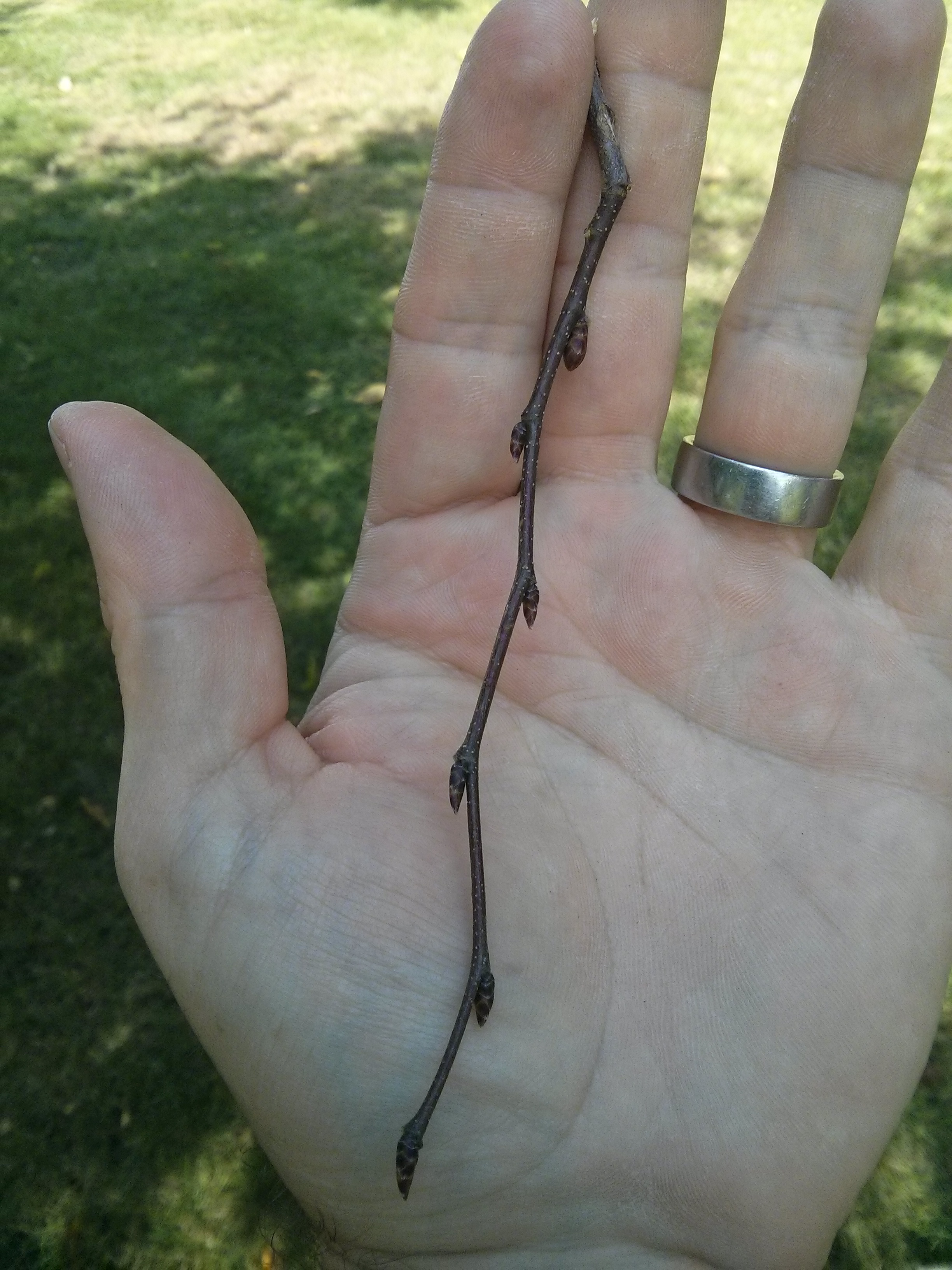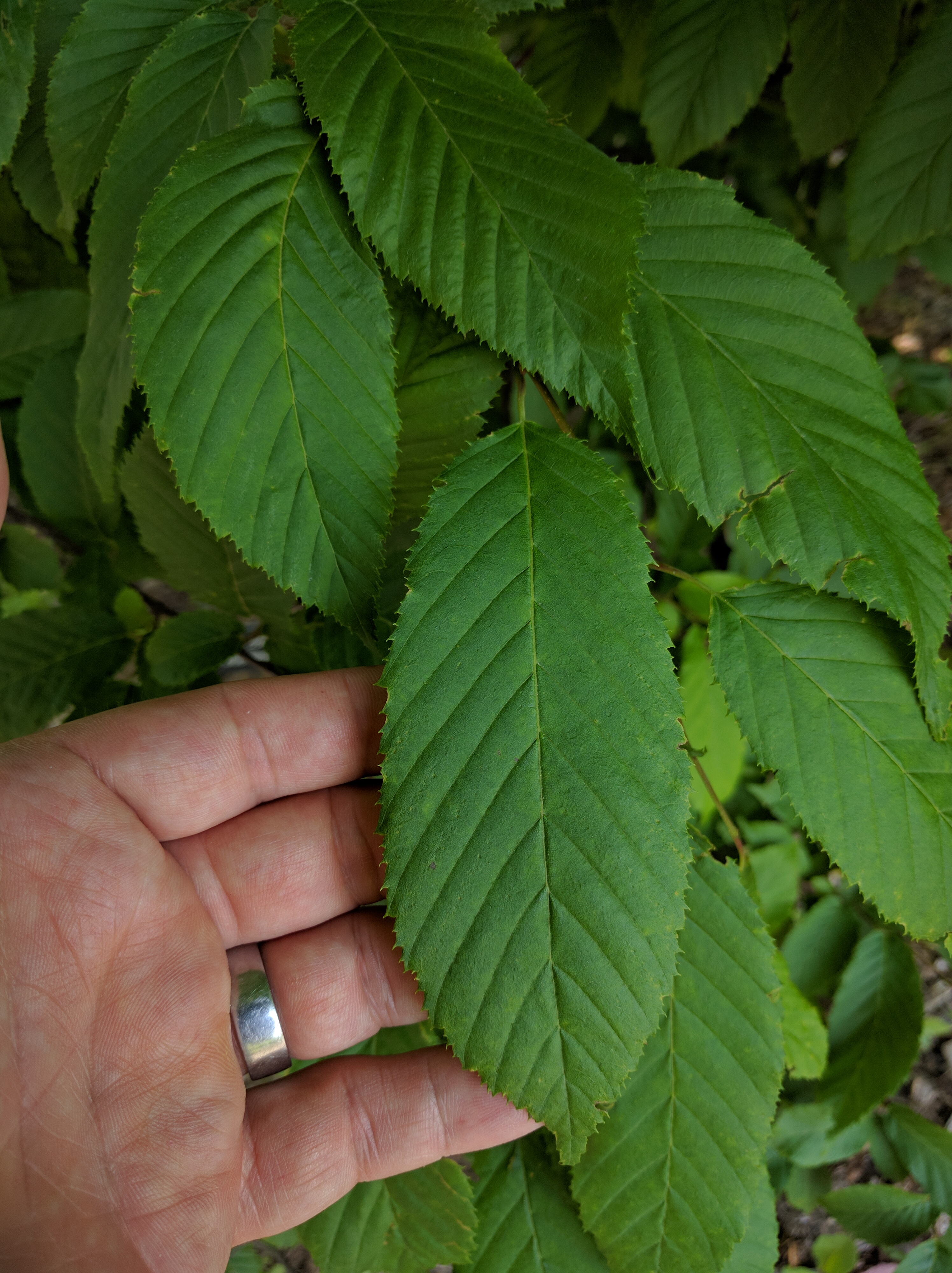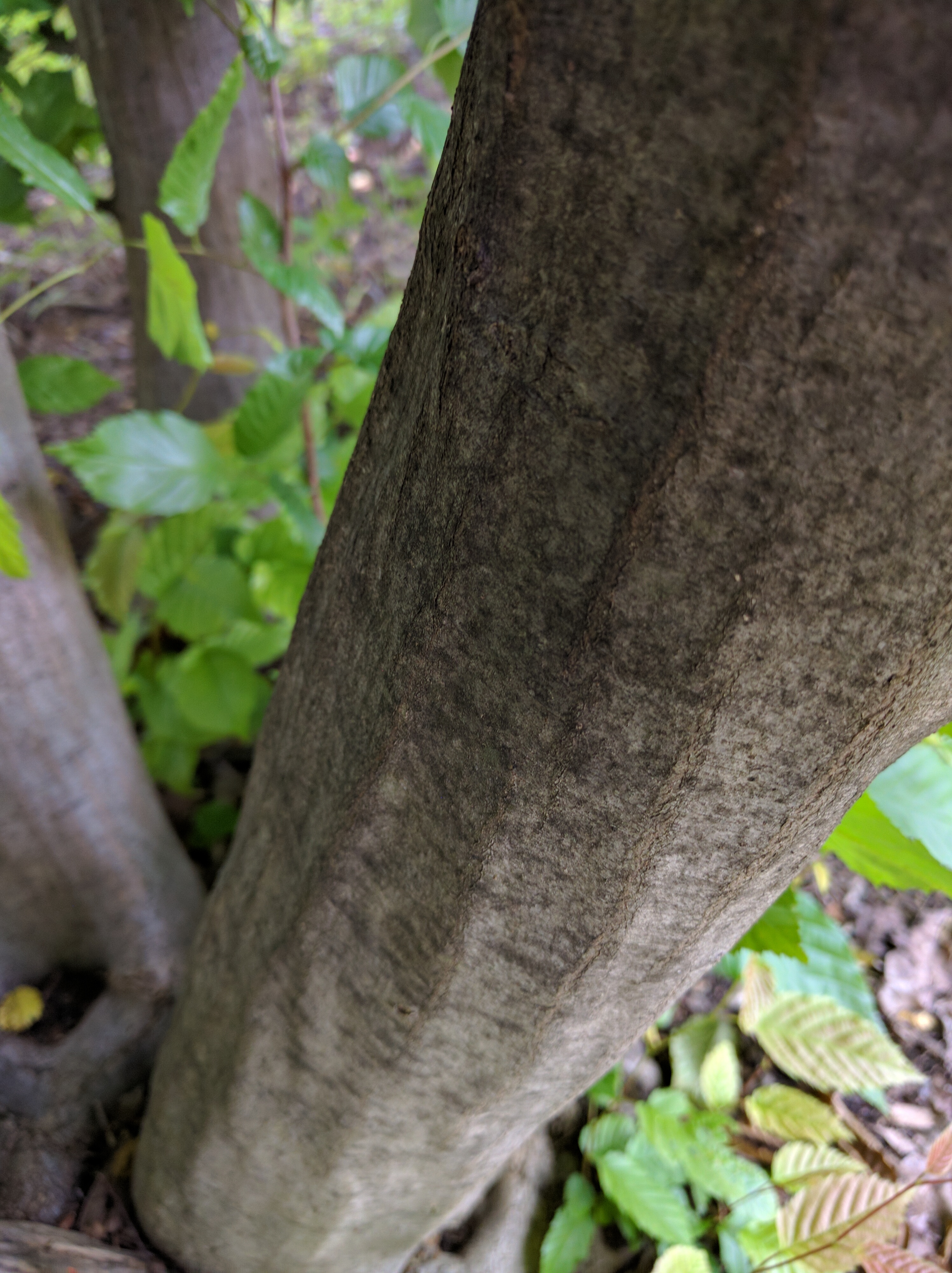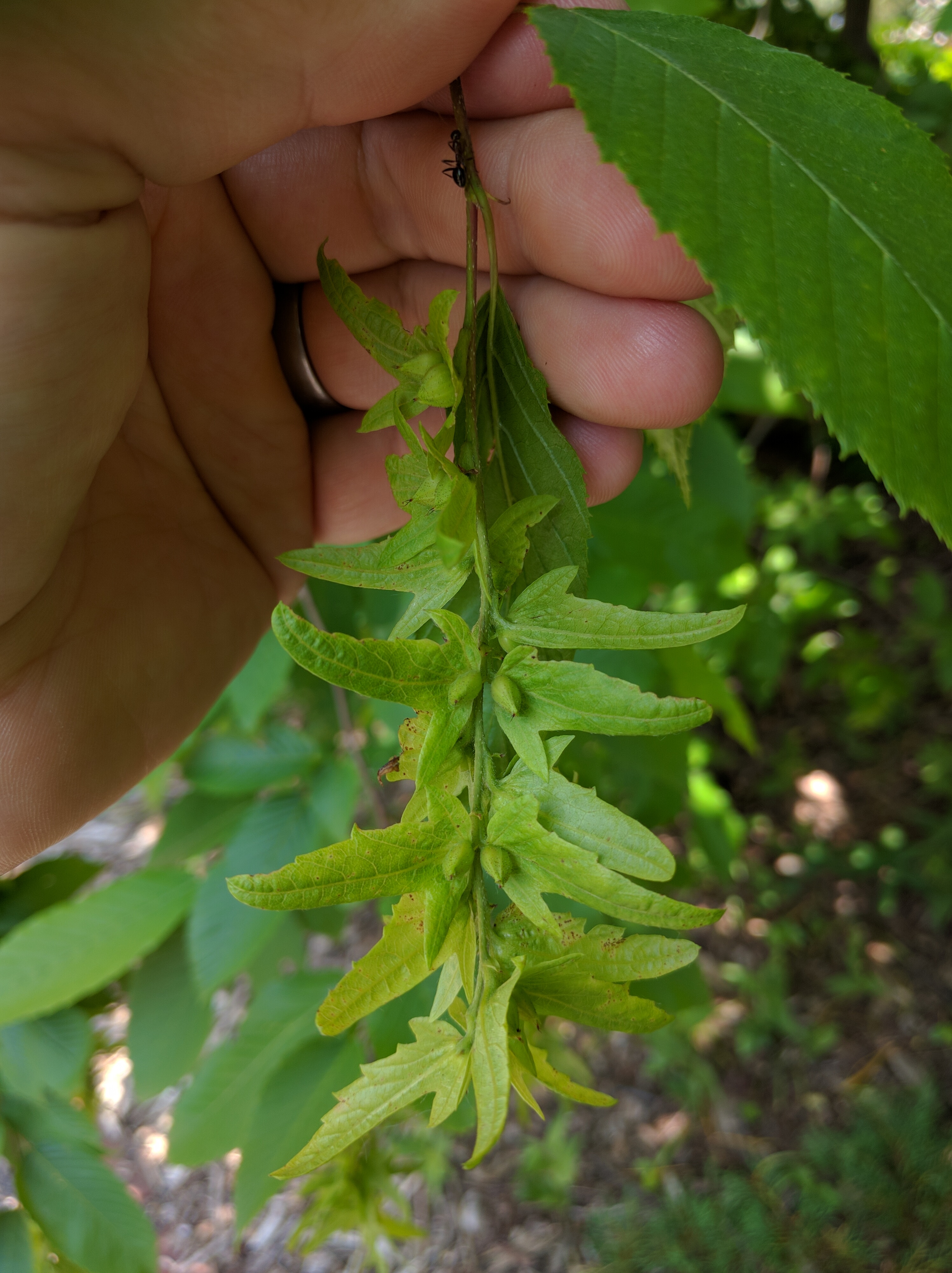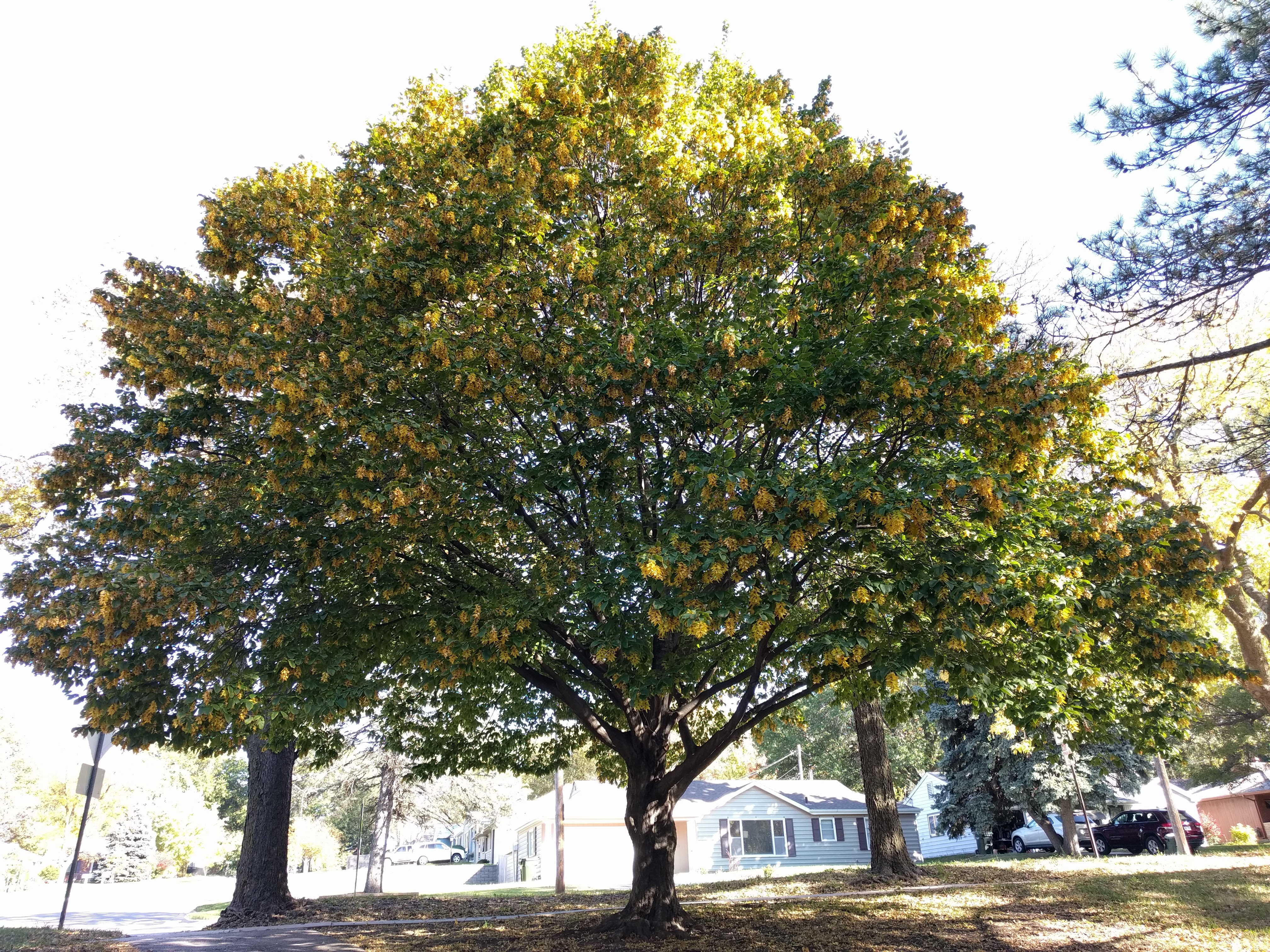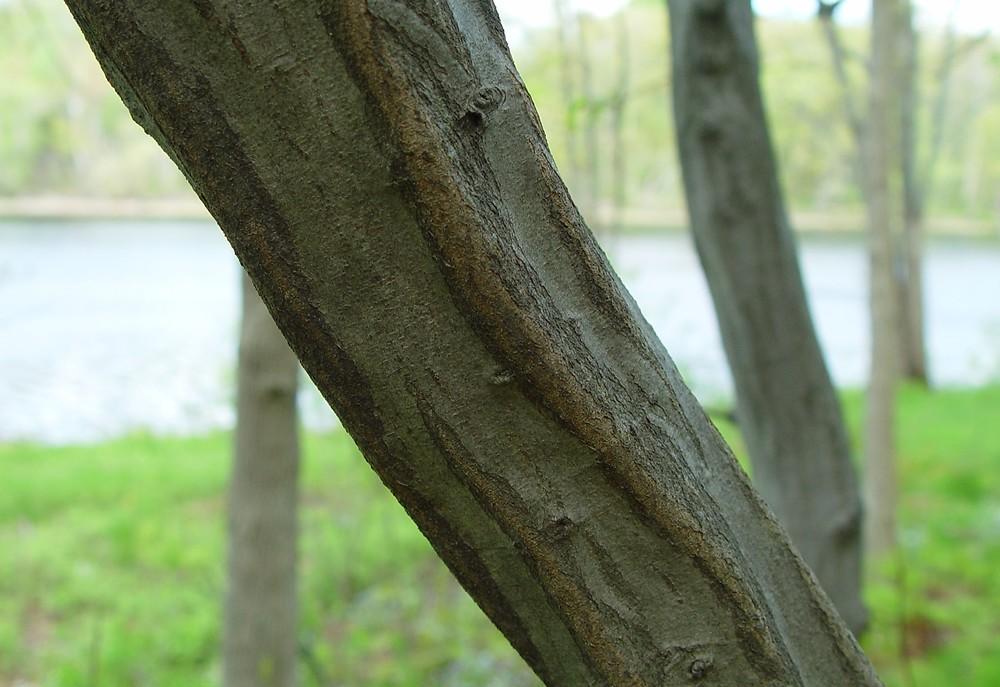Common Name: blue beech, musclewood, American hornbeam
Scientific Name:
Family: Betulaceae
Genus: Carpinus
Species: C. caroliniana
Hardiness Zone: 3 to 9
Height: 20 to 35 feet
Width: 20 to 35 feet
Common Characteristics:
The blue beech, also known as musclewood and American hornbeam, is a small shrubby tree with one or more trunks. This tree has distinct flares on the trunk and branches that resemble muscle definition. The leaves are elliptical in shape and have doubly serrated margins. The veins in the leaves are straight and nearly parallel. They are a dark blue-green above and paler underneath with hairs on the veins. The leaves turn brilliant orange to red color in the fall that looks striking against the smooth blue-gray bark. The twigs are brown and slender with a zigzag pattern. Male catkins are greenish and droop down from the twigs. Female catkins are pairs and reddish-green. The fruit is paired and is egg-shaped with hairy greenish nutlets that have a leaflike greenish scale, similar to the appearance of hops, growing in clusters. They hang from slender stalks and mature in late summer.
Where it Grows:
Blue-beech can be found growing in moist rich soils, mainly along streams and ravines and in the understory of hardwood forests. It does well in full sun, part shade, and full shade. It is intolerant of salt spray, so it is best to plant this tree at least 30 feet or more away from main roads and streets.
How it's Used:
Blue-beech can be used as an ornamental tree in urban parks and large backyards. The wood can be used for tool handles, although due to the small stature of the tree it is not practical for commercial harvesting.
Ecosystem Services:
Blue-beech provides food and shelter for game birds such as grouse and pheasants, small mammals, and songbirds. Deer are also known to browse the twigs and foliage.
Where it is Native To:
Blue-beech's native range is the majority of the eastern and midwest United States into Texas.
Known Varieties and Their Traits:
- Firespire™ American hornbeam (Carpinus caroliniana 'J.N. Upright'): A narrow, upright cultivar with improved red-orange fall color; 20 feet high by 10 feet wide.
- Firespire™ American hornbeam is the best cultivar to be grown in Minnesota
- J.N. Strain American hornbeam (Carpinus caroliniana 'J.N. Strain'): A vigorous cultivar with improved orange-red fall color.
- Native Flame® American hornbeam (Carpinus caroliniana 'JFS-KW6'): An upright form with bright red fall color; 30 feet high by 20 feet wide.
- Palisade® American hornbeam (Carpinus caroliniana 'CCSQU'): An upright oval form with yellow-orange fall color; 20 to 30 feet high by 15 to 20 feet wide.
Problems:
There are no known major diseases or insects that affect blue-beech. Minor leaf spots can occur. Blue-beech is black walnut toxicity resistant.
References:
University of Minnesota Extension
Little, E. L. (n.d.). National Audubon Society Field Guide to North American Trees; Eastern Edition. (Original work published 1980)
